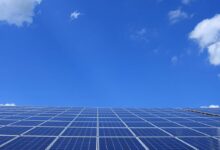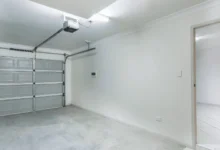An innovative irrigation system is key to a beautiful and healthy landscape. Drip irrigation and sprinkler systems are the most effective of all the tools and methods available to manage water wisely. A drip irrigation system is perfect for all landscaping applications. This system can either employ PVC pipe or polyethylene tube or even a combination of both. Polyethylene tubing is ideal for home gardening, whereas PVC systems are typically used for large-scale farming applications.
Preparing a Drip Irrigation System for Your Garden
Meeting the watering needs of a garden is a challenging task. Keeping your garden hydrated with busy schedules and changing weather conditions can be difficult. Your busy schedule and atmospheric conditions can leave your garden greens thirsty.
You can resolve this problem by contacting Johnnys Turf a local irrigation company serving St. Augustine & Jacksonville, FL who will install drip irrigation and sprinkler systems. These include a complete kit with all necessary components. A drip irrigation system is composed of sprinklers, hoses, nozzles, and tubes.
These components deliver the right amount of water to each plant and prevent over-or underwatering. When set to a timer, drip irrigation systems can deliver water automatically. They are easy to install and maintain.
Moreover, drip irrigation systems can be tailored to specific types of gardens. So keep reading to learn more about this unique watering system.
Drip Irrigation System Nozzles
A drip irrigation system needs various emitter nozzles. Some of these will work the best based on the design and needs of your garden. Before getting a new irrigation system installed into your garden, it is crucial to learn the different types of emitter nozzles.
Micro-spray
A Micro-spray sprinkler makes it easy to get the best out of a low-pressure drip irrigation system. They offer a more enhanced spray range than other emitter types with the same pressure. They are mainly fitted alongside taller plants and can treat a handful of plants with higher water needs while leaving the rest unaffected.
Point-source Emitters
Point-source emitters are preset nozzles that deliver a fixed amount of water to each plant at intervals of an hour. This non-adjustable option is excellent for plants that do not need water on their leaves, like the eggplants. They are ideal for satellite plants and similar plants with sensitive leaves and can be used in planters and hanging pots.
In-line Drip Emitters
The easy and quickest way to water your greens is in-line drip emitters. They come with a smaller diameter than the main house and are available in different lengths. These emitters help the gardeners to place the hose amid the plants. This irrigation system is low-maintenance, leak-reducing, and easy to use.
Basin Bubblers
The basin bubblers are unique additions to drip irrigation systems. These low-pressure and small sprinkler-style nozzles are fixed in the ground and attached to the central drip system hose.
They are ideal in spraying water in clusters of flowers and plants. However, they make it easier to have multiple nozzles. The system reaches all the greens into your garden by spraying water in a 360-degree pattern.
Buying Guide of a Drip Irrigation System
Once you learn the different irrigation systems and emitters available, it is time to concentrate on installing the right system into your garden.
The size and type of your garden and various other factors are to be considered when planning to install a drip irrigation system. Make your greens envious with cost-effective, low-maintenance irrigation systems installation Jacksonville.
These are some key factors to consider:
Size of the Garden
The actual size of your garden will determine the appropriate setup and kit you should purchase. For example, if you have a more miniature garden, it can be irrigated with a single kit, but you might need to consider having additional tubing or emitters if it is enormous.
You can also think of having two separate systems installed at different locations across your landscape and make it function at different times.
Species of Plants
Each plant will need a different amount of water. Based on the types of plants you have in your garden, you may need to use a combination of point-source and in-line emitters.
The flexibility of drip irrigation and underground sprinkler system is one of its most significant values. If appropriately designed, an individual system can irrigate many plants across the landscape.
Type of Soil
The soil around your property can be sandy, silty, peaty, clay, chalky, or loamy. All these types have different nutrient content and drainage characteristics.
Garden soil is often a mixture of these soil types and has the right blend of nutrients and water-holding features. A drip irrigation system should work well to raise or fill flower beds with garden soil. However, knowing the type of soil you have will help you choose the best drip irrigation system.
Water Needs
Once you have identified the type of plants and soil you have, it’s time to determine their water requirements and choose suitable emitters. Even plants with low water requirements can be affected by fast-drying, quick-draining soils.
If so, you may either need to increase the point source emitter’s size or use in-line tubing with a closer emitter spacing. You can consider a 1 GPH emitter with 9-inch spacing. To enhance nutrients and lower the amount of drainage, consider amending the soil with fertilizer or peat moss.
Overwatering in poor drainage soils can lead to problems even with plants with high water needs. If this is the case in your garden, half-gallon emitters and 12-inch spacing in-line tubing may be the best options to prevent your plants from drowning. Adding sand into the soil is also an excellent option to increase drainage.
Pressure Compensation
Drip irrigation systems can have varying pressure levels due to various factors like garden bed elevation and hose length. The varying pressure levels can make emitters flow differently with more or less water flow based on the pressure.
However, pressure compensating drip irrigation systems are the best options to combat this issue. This device will emit the same water amount regardless of how low or high the pressure they have at their inlet. This setup will lead to consistent watering to all plants and give you a healthy environment.
Filters
A filter is an integral part of a drip irrigation system. Water systems can get clogged by sediment, dirt, or scaling from metal pipes. These elements limit water flow. An in-line screen filter can protect the watering system from pressure-blocking particles.
It is fixed at the hose faucet, and it catches any obstructions before they can make their way into the system. If the water flow is noticed to get slow, you need to remove the screen from the system and clean the particles out.
Flush Valves
Various obstructions like small insects and dirt can get into the drip irrigation systems through the emitters, and the in-line filters cannot stop them.
Nevertheless, some drip irrigation systems have automatic flush valves that prevent clogging. These valves are fixed at the end of the system.
They automatically open when the system pressure drops. These open valves allow the residual water to drain and clear some sediment from the system.
Check Valves
If the water pressure drops down while your drip system runs, the water supply could be affected. If this happens, the water pressure in your house could drop suddenly, and the water supply can be re-fed from the drip system to your house, leading to a contaminated water supply that will be unsafe to use. Installing a check valve in your system will reduce this risk.
It will allow water to flow in a single direction and automatically shut off any back pressure or a pressure drop. If your irrigation system doesn’t have a check valve, get one and fix it at the hose faucet.
Auto Timer
Not all irrigation systems will have an automatic timer, but some have. Automatic timers are programmable valves that can program to function for a specific time or at a particular time. Without activating the system manually, you can set the right amount of water.
A drip irrigation system installed with an automatic timer will help you control the water usage with consistent results. While the system will automatically turn on and off, you don’t need to remember the watering times.
What Makes a Drip Irrigation System a Pro?
Drip irrigation systems are easy to install and maintain and don’t take much maintenance to create a beautiful garden space around your property. They are easy and quick to install since they require little to minimal digging. The distribution hoses are available in various colours. You can get one that matches your mulch.
Also, you can fit them into place with the help of landscaping staples. The barbed fittings are used to install the emitters. You can place them anywhere you like or require in your garden by simply inserting a stake into it.
Automatic watering is the best benefit of having a drip irrigation system. The automatic timer ensures that your garden gets water every day regardless of whether you are at home or not. You can also pair the correct emitter with the plants to see how much water each has every hour.
Drip irrigation systems are easy to maintain. You need to flush the system whenever you notice a decrease in flow, and it will be back up in no time. Even irrigation repairs can be done by hiring a professional irrigation system repair Jacksonville company. With little DIY experience, homeowners can easily handle a drip irrigation system and have a healthy landscape for years.
Similar posts:


